News Archive
-
Dec 27 2019
The Stratospheric Report #05 - December 2019
Hello and welcome to a new issue of "The Stratospheric Report" (TSR in short).
On this edition you will find the usual update on Project Loon including a new endurance record, the overflight permission granted by Uganda's government, latest launches, landings and actual whereabouts of the balloon fleet; recent flights and new mark for World View's Stratollites; latest flight activity of Raven Aerostar; current status of Strateole 2 balloons in flight and first launch in NASA's balloon campaign in Antarctica.
Enjoy the reading. I wish you all a nice holyday season... and don't forget to Subscribe to receive a heads-up when the new issue is online.
Probably the next edition of TSR will take a little longer to appear than usual as I'm in the process of updating the online database of balloon launches to include all the data of 2019 and previous years. Thanks by the patience.
-
Project Loon launches and landings and current status of the balloon fleet
New balloon endurance record achieved by Project Loon
On the morning of December 25th, Project Loon completed it's longest flight since the start of the program in 2013. The balloon with callsign HBAL648 was moved during christmas eve towards the fixed recovery zone located in the coastal desert of Peru near Ica, and landed at 14:20 utc in a point located 20 km west of the city.
The balloon was launched on May 8 at 00:28 utc from Jose Aponte de la Torre Airport in Ceiba, Puerto Rico, and remained in flight 231 days 13 hours and 52 minutes. This flight surpassed the record established last June by another balloon of the project which also landed near Ica after 223 days.
As far as I know, the Stratospheric Report is the first medium to reveal the new milestone achieved by the project.
The map below these lines shows a portion of the entire flight path of the balloon from launch to landing. I've made available a custom made full path map which contains hourly fixes of the position of the balloon that I've collected during almost eight months of tracking.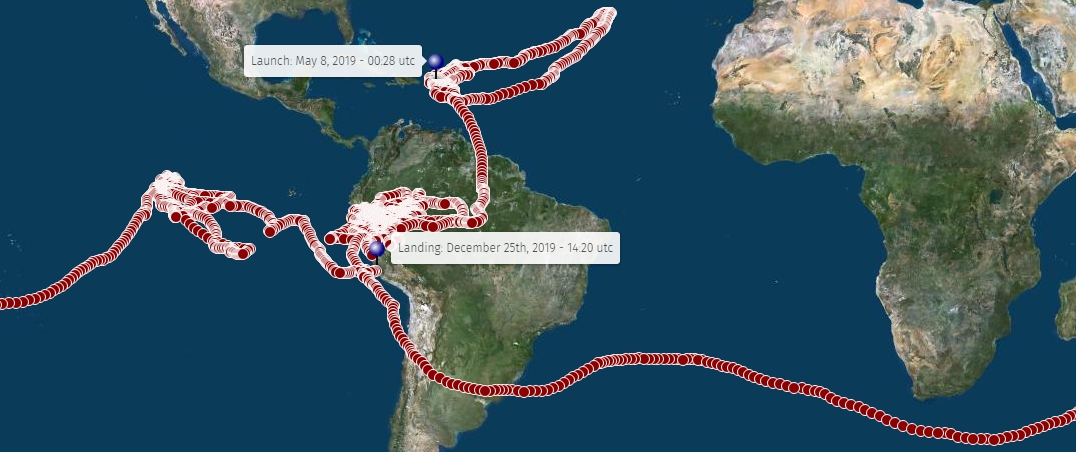
The recovery of this balloon will be very important for the project, not only to recycle the electronic hardware for future flights but also to carefully study the balloon fabric, which could yield very important information on how elements and specially the UV radiation affected the envelope of the balloon in such a long stay in the stratosphere.
Overflight permission signed with Uganda's government
A big step towards the consolidation of the operations of Project Loon in Kenya was taken on December 9, when representatives of the company signed a deal with the Ugandan government to grant overflight rights for the balloons of the company in that country.
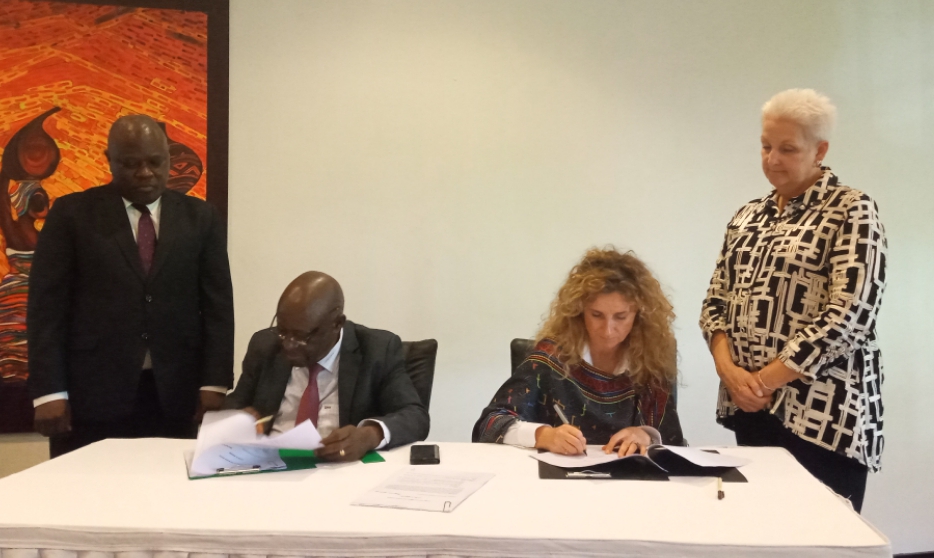
US Ambassador to Uganda HE. Deborah Malac and Uganda's Minister of State for Works and Transport Aggrey Bagiire witnessing the signing of the letter of agreement by Dr. Kakuba and Dr. Anna Prouse, the Head of Government Relations at Loon LLC
The agreement is vital for Loon's developmental plan in Kenia that should already be working since last July. The long negotiation with Uganda's government could be the reason of the delay in starting the operations.
To clarify the information that circulated among several news websites and portals on the matter, it is worth mentioning that the agreement does not imply that Loon will provide internet access services in Uganda, but that it will have permission to use the airspace of the country.
Why is this important?. First, it gives more room to manouver the fleet of balloons servicing Kenya to achieve station keeping above areas of interest and second it could short the deployment distance and time needed to insert new balloons launched from Puerto Rico (thus prolonging its useful life) because they will not have to carry out complicated maneuvers to avoid prohibited airspace. A key example of this late point is the current situation of Loon's balloons in the Caribeean: although so far the project has not recognized it officially, all their balloons must avoid sovereign airspace of Cuba and Venezuela on their transit to southamerica. The prohibition is such that the balloons can't even venture slightly into the FIR (Flight Information Regions) of Maiquetia and Habana. Sometimes this lead to complex manouvers that take hours and even days to avoid these regions.
Back to the agreement, a few days after the announcement, Uganda's Internal Security Organisation (ISO) disapproved the decision, citing security concerns. ISO is the government's counter intelligence agency responsible for providing national security intelligence to Uganda's policy makers. It also engages in covert activities at the request of the President.
The head of the organism, Col Frank Kaka Bagyenda has vowed to block the deal, saying they have "...received information that it is a means by which foreign countries want to spy on Uganda and destabilize it...". Then, taking the conspiracy way farther he cited "an incident" in Egypt where such an internet deal was approved before it led to what has since become known as the Arab spring that ended the reign on President Hosni Mubarak.
On the other side, armed forces spokesman remarked that the deal was approved by the Chief of Defence Forces, Gen David Muhoozi, who saw nothing wrong on it. In the same direction, David Kakuba, Director General of the Uganda Civil Aviation Authority, said that "...prior to the signing of the agreement, Loon LCC has been operating trials over various countries in Africa including Uganda over the last few years. All the trials were fortunately successful culminating in the signing of the letter of agreement with Uganda to facilitate regular overflights of Loon balloons to Kenya..."
Latest balloon launches performed by Project Loon
The launch activity of Project Loon during the period of time covered by this report has been scarce. Although there were some NOTAM's issued for launches from Puerto Rico, so far until the moment of the publication of the bulletin, no new flights were performed.
The only six flights made in this timeframe were short duration missions mainly for testing or R&D purposes launched from the base of Winnemucca, Nevada. Below the details.
On December 6, was launched at 21:48 utc HBAL087. The balloon remained aloft 2 hours and 30 minutes, landing 13 km west of Wild Horse Reservoir in Nevada. It was followed four days later on December 10 by HBAL106 which after launched at 21:21 utc landed a little more than three hours later 20 km SW of Carlin, Nevada.
On December 11 was launched HBAL108 which was the longest flight of the series. It remained in flight for 30 hours before landing on December 12 at 7:23 utc 44 km N of Santa Rosa, New Mexico
Next two flights occured on December 16. HBAL088 was launched at 17:46 utc and landed 4 hours and 20 minutes later 26 km SSE of Eureka, Nevada while HBAL107 was released at 19:26 utc and returned to the ground at 23:33 utc that same day 24 km SSE of Eureka, Nevada.
Last balloon sent aloft for this edition was HBAL124 launched at 17:47 utc on December 17. It landed at 20:18 utc that same day 48 km N of Battle Mountain, Nevada after a total flight time of 2 hours and 30 minutes.
Latest landings performed by Project Loon

Since the last issue of TSR, eight balloons were terminated, five in Peru and one each in Australia, Brazil and the United States.
On December 8 at 13:10 utc landed HBAL716 after 177 days aloft. The landing spot was located 25 km west of the city of Ica. This balloon was originally launched from Puerto Rico on June 14 and spent most of his useful life as part of the Indic Ocean cluster. Then was transferred to the cluster of the Pacific to spent a few more weeks and then finally moved to Peru for disposal.
Meanwhile in the other side of the world, over Australia was terminated HBAL008. The operation took place at 3:48 utc on December 12 and the landing site was located 23 km of Pmara Jutunta a small settlement 150 km North of Alice Springs. The balloon has been launched from Winnemucca on September 10th and remained in flight 93 days.
After that single termination in Australia the rest of the landing activity moved to the american continent. Four balloons landed in the fixed recovery zone in the coastal desert of Peru, close to the city of Ica. The sequence was the following: HBAL668 landed on December 16 at 17:31 utc 22 km W of Ica after 185 days of flight; HBAL747 landed on December 19 at 6:30 utc 26 km SW of Ica after completing 170 days aloft; HBAL674 and HBAL684 landed on December 25 at 12:33 utc and 14:20 utc, respectively, west of Ica and less than one mile each other. The first one remained in flight 194 days while the second one set a new record of 231 days.
All these balloons were launched from Puerto Rico, between May and July.
The next two balloons extracted from the fleet landed in the Amazonian Forest in Brazil and the coastal desert in Peru on December 26.
The first one was HBAL018 which landed at 2:22 utc. Originaly launched from Winnemucca, Nevada, on October 2 at 19:50 utc it flew for 85 days. The landing spot was located 2 km W of Nazare, in Amazonas State, Brazil. The second one HBAL740 landed at 6:37 utc 28 km SSW of Ica after a total flight time of 177 days. It has been launched from Puerto Rico on July 2, 2019 at 1:59 utc.
Finally, on December 27 at 8:26 utc landed HBAL812 in a spot located in Schleicher County, Texas 18 km north of the town of Adams. Total flight time for this balloon launched from Winnemucca was 161 days.
Current status of Project Loon's balloon fleet
As of December 27th, 2019 at 10:00 utc the total number of balloons in flight is 38. Currently, the youngest balloon aloft is HBAL099 launched on December 5, 2019 while the oldest member is HBAL703 wich so far has been 223 days aloft. This balloon is 9 days away of breaking -again- the just stablished endurance record of 231 days by HBAL684.
The map below shows the aproximate location of the balloon fleet:
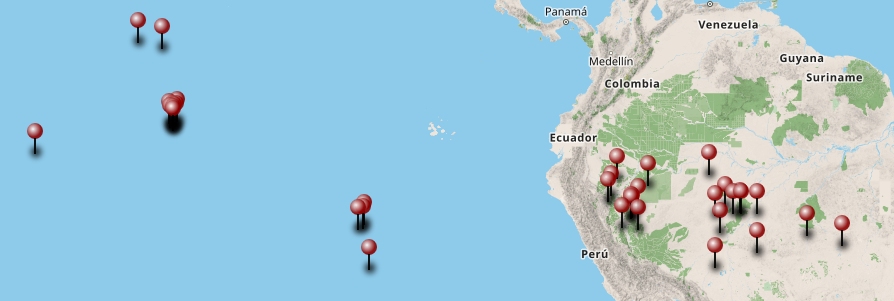
-
World View launch/landing activity
For the first time since it's inception World View, the Tucson-based balloon firm, performed on December 16th a launch of a Stratollite system which was broadcast live on the internet. The only antecedent was the ill fated publicity stunt made in June 2017 for KFC.
The event is of significant importance on the communication policy of the company, that historicaly was not much open to inform the public about their activities. This can be read as part of a more deep reengineering the company is making which include a renovated corporative image and that was reflected in a recent facebook post on which affirms that it have "...a new focus, transitioning from purely flight services to a high-value data & information services provider...".
The live transmission was hosted by CEO Ryan Hartman and SVP of Engineering & Manufacturing Matteo Genna whom covered from early preparations and inflation, to the launch and first minutes of flight. In case you missed it, below these lines you will find the archived version of the stream.
During the live streaming we finally checked that #N105WV is still in the air !!
— StratoCat (@stratoballoon) December 16, 2019
41 days and counting somewhere... pic.twitter.com/02UahTfwKyAlthough, there was not an in-deep description of the payload transported onboard the stratollite launched, some isolated references were made by the hosts to some kind of remote sensing system. A big down looking camera was clearly visible on one of the sides of the Stratocraft, the payload containing gondola of the Stratollite.
During the transmision were made some interesting disclosures. The first one, was about the fate of N105WV the Stratollite system launched also from Tucson on November 4th, which made quite a show above Nicaragua ten days later and then vanished in the Pacific. Well, judging by the readings on the screens shown at left, from World Views's flight control center (image at right) the balloon was still in flight after 42 days somewhere. More on this later.
Another interesting revelation was that the company is looking to establish a second launch base for its Stratollite systems in the future, although not on American soil but in Australia. Quite interesting.
Back to the details of the flight, the mission dubbed as GRYPHON 16 was launched at 17:21 utc and after reaching float altitude of 68.000 ft it started to move towards the east. That same evening, the balloon made a spectacular apparittion above El Paso / Ciudad Juarez area of the US/Mexico border making some headlines.
First hand images of the landing site of @WorldViewSpace's #Gryphon13 #Stratollite in Texas taken by Brewster County Sheriff's Office.
— StratoCat (@stratoballoon) December 22, 2019
Not an upright landing... pic.twitter.com/qZYou5GaoL
A few hours later, as a confirmation of the sneak peek I've had on the screens of World View's flight center during the streaming, N105WV appeared again in the ADS-B tracking network gently floating off Baja California. Apparently it ventured not so far from the american continent west coast and now was heading home.
That marked another first for World View: having two Stratollite balloons in the air simultaneously.
Another detail we learned from the streaming is that all the Stratollites flights have the same mission name "GRYPHON" followed by a number. Also, each mission has it's own patch including a motto in latin which probably related to the objectives of the flight. That made sense of some strange patchs I've seen hanging in the walls of World View's HQ in an article published in 2018 by Business Insider.
Back to our returning balloon -that we should properly call for it's true mission name as GRYPHON 13-, it started to move towards US soil and by December 19th it already crossed Baja California and great part of Mexico heading to Texas. Finaly about 21:00 utc that same day, it landed in a ranch located north of Marathon, in Brewster County, Texas. At left we can see some images of the landing site.
The mission marked not only the first long duration flight of the Stratollite system to outside US and back, but also established a new flight endurance record for the system of 45 days, 2 hours and 48 minutes.
Back to GRYPHON 16, as of December 26th, at 17:30 utc, the balloon and it's cargo is floating gently above the Atlantic Ocean east of Antigua and Barbuda as we can see in the map below. Total flight time so far has been ten days.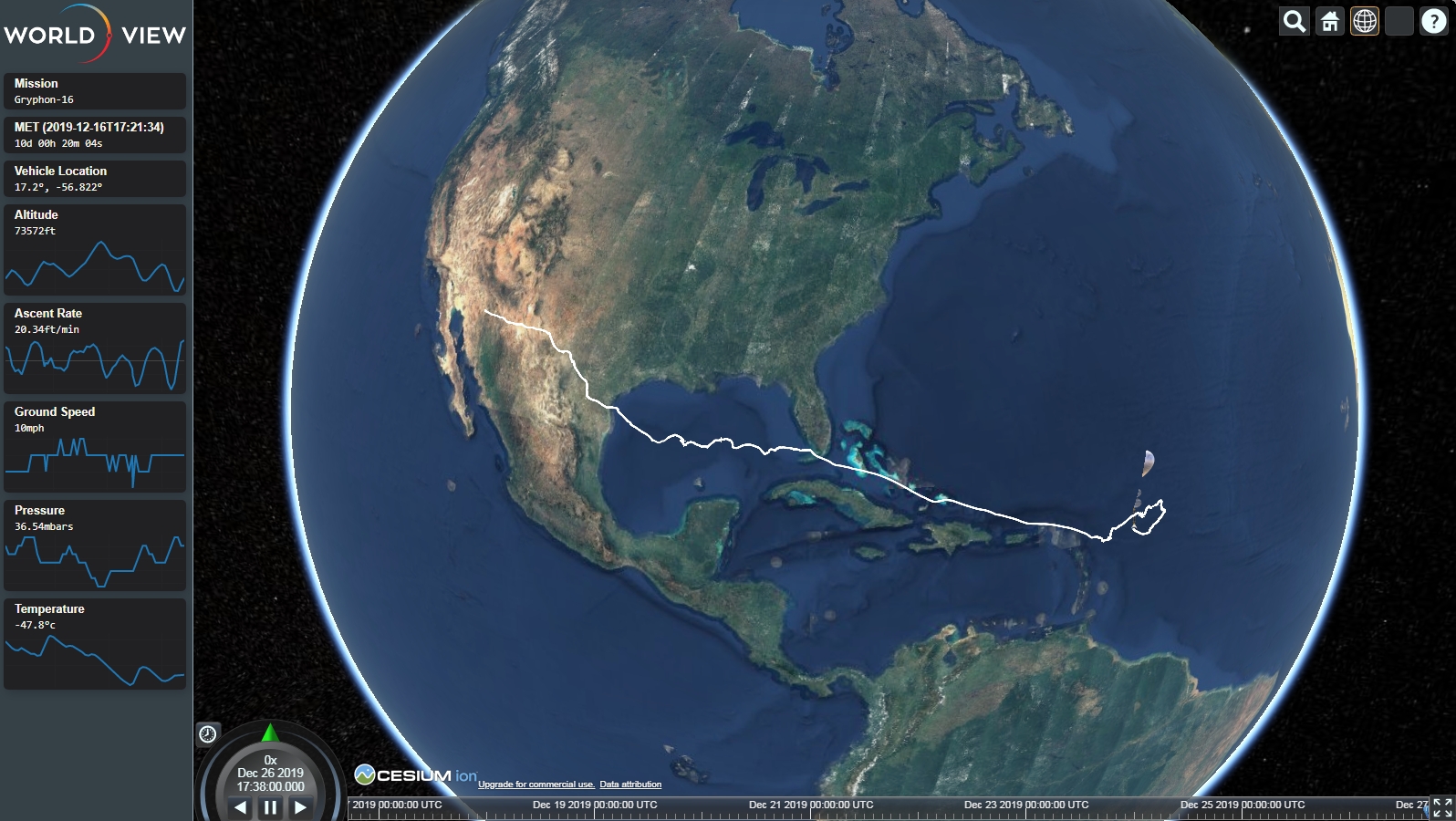
The cool map above was obtained from a special website presented by World View as part of the GRYPHON 16 launch event. It allows to track the flight path of the balloon in real time and also permits to get readings of parameters of flight like altitude, heading, temperature, ground speed, etc. However, be careful using it, because the feature seems to need some tweaking and tends to deplete the resources -specially memory- of any machine on which I've tried to run it.
Update: a few hours after I've published this, a much lighter version of the tracking page was made available, which corrected the flaws of the previous version. To be honest, I do not believe that the change is due to my comments but that these modifications to the system were probably under study previously.
-
Raven Aerostar activity
Raven Aerostar, the Sioux Falls-based balloon firm performed several launches in the last 15 days.
As a continuation of the launch campaign which I've reported in TSR 4, a fourth Thunderhead balloon was launched from an undisclosed site near Mannix, California. The craft with the callsign HBAL0366 started its flight on December 11 at 21:00 utc and landed near Mesa Verde, California after a total flight time of three hours and a half.
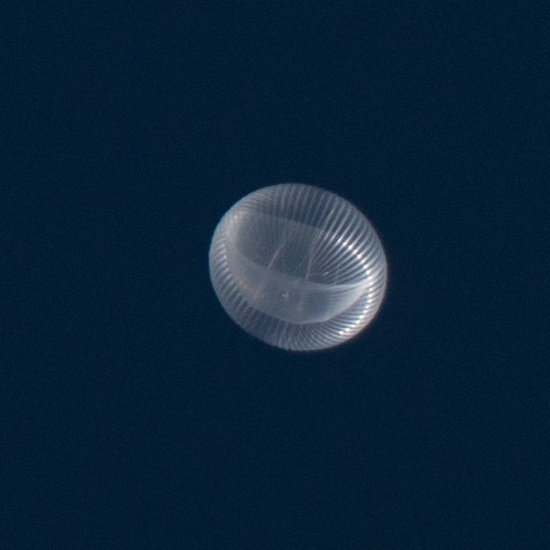
Thunderhead balloon with callsign HBAL0390 in flight above Ohio in June 2019. Image by Taylor Cupp.
After that, activity moved further east to New Mexico, where on December 14, four Thunderhead balloons were released from the same undisclosed point located NNE of Moriarty in Santa Fe County which Raven used in November. The launch sequence was as follows.
HBAL0367 was launched at 10:45 utc and quickly ascended to a mean float altitude of 63.000 ft. Moving to the east it remained in flight more than 33 hours, being last tracked the next day at 23:30 utc over the Atlantic Ocean 400 km east of Ocean City, Maryland. However, the balloon appeared again on ADS-B tracking networks briefly on December 21 flying at 55.000 ft, before ditching in the Atlantic Ocean about 17:30 utc in a point located 200 km NW of Madeira Island. Total flight time was 6 days and 7 hours.
Second balloon, HBAL0368, was launched at 12:00 utc. During the flight it showed in the tracking some misleading information regarding altitude (not uncommon on ADS-B) which never rose from 30.000 ft during the flight. However at the moment of termination at 16:50 utc, the height from which the balloon was separated from the payload was 64.800 ft. It landed 50 minutes later south of Tascosa, Texas after 5 hours and 40 minutes of flight.
Third balloon launch of the day was HBAL0369 which was released at 13:00 utc and remained inflight at 65.000 ft for 5 hours and 40 minutes. It landed at 18:40 utc east of Howardwick, Texas.
Fourth and last balloon of this series of flights from Santa Fe County was HBAL0370 launched at 14:00 utc. It also rose to 63.000 ft and moved Northeast. It would land next day at 23:00 utc not far from Linden, Indiana, after 33 hours aloft.
-
Strateole 2 campaign in Seychelles (IV)
A brief update on the campaign. All personnel that took part of the operations in Seychelles Islands probably will at home now in time for the seasons. Meanwhile, the eight balloons launched are still in the air 20 km above the Pacific Ocean with the exception of ST2_C0_04_TTL1 which already crossed southamerica and is now above the Atlantic Ocean.
The longest float time so far has been 45 days for ST2_C0_02_STR2 the opening flight launched on November 11th.
The map below show the situation of the eight balloons as of December 27 at 11:00 utc. Live tracking is available at https://webstr2.lmd.polytechnique.fr If you missed Strateole 2 details from TSR's previous issues, you should visit the project's website.
If you missed Strateole 2 details from TSR's previous issues, you should visit the project's website.
-
NASA campaign in Antarctica (II)
First launch of the season at first try !...
No doubt, if you ask any scientist, everyone's opinions will agree that the best thing that can happen to you in a balloon launch campaign is a succesful and smooth launch at first try and a soft landing. Well, Super-TIGER team scored one of two in this season to light up the series of unfortunate events of recent times for their instrument.
But what I'm talking about?. Super-TIGER is one of the two instrument participating of the NASA balloon launch campaign at McMurdo Station in Antarctica. The experiment acronym stands for Super Trans-Iron Galactic Element Recorder and was built with the goal of measuring the elemental composition of ultra-heavy galactic cosmic-ray nuclei, whose origin is one of the enduring mysteries in astrophysics. It was developed through a collaboration among Washington University in St. Louis, NASA's Goddard Space Flight Center, California Institute of Technology, Jet Propulsion Lab, and the University of Minnesota. The instrument is an augmented and improved version of TIGER, another experiment which was flown in Antarctica twice in 2001 and 2003.
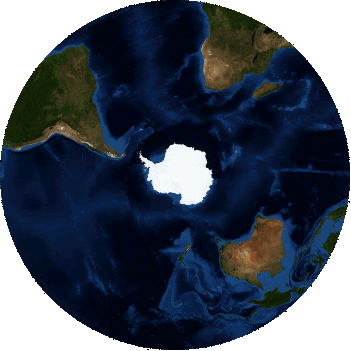
Real time location of the SUPER TIGER Flight 706N from the onboard GPS system.
Super-TIGER is a veteran on the ice: it had its first flight over Antarctica in December 2012, totalling 55 days aloft and performing 2.7 revolutions around the South Pole setting a new record for Zero pressure balloons in the NASA balloon program. It was terminated in Febraury 2013 and landed on the West Antarctic Ice Sheet. Due to logistics complications and the cancellation of the balloon launch campaign in 2014, it was left in the ice during two years before being recovered in early 2015.
After that, the instrument returned to Antarctica to take part of the 2016/2017 launch season to no avail: after 16 unsuccesful launch attempts the campaign was called off. Instead of returning to the United States, the experiment was put in special storage at McMurdo Station to survive the Antarctic winter to be flown next summer. In December 2018, was finally launched succesfuly but a leak developed in the balloon and forced to terminate the flight a few hours later. Recovery of the instrument occured in January 2019
The current campaign for Super-TIGER started in late November, when the scientific team arrived in airplane from New Zealand and the instrument in surface ship from United States. After the usual mandatory survival training, the work started for assembling the instrument and get flight ready condition as soon as possible. By December 10 they passed succesfuly the compability test -aimed to assure Super-TIGER electronics will not interfere with NASA's onboard balloon systems) and were ready to launch.
Weather was promising for a December 15th launch, and for the surprise and joy of all -me included- the giant balloon and it's cargo started it's stratospheric journey as mission 706N at 2:55 NZDT. In the map at left can be seen the current track of the balloon around the white continent while the video below these lines show the launch operations.BLAST-TNG the other instrument which is participating of the campaign, had a launch opportunity on December 24th, which was finally cancelled due to not so stable winds. As I'm completing this report in December 26th, the team was awaiting for a possible second chance to launch, which finaly was also scrubbed. This time the wind speed was low enough, but the direction kept changing.
Stay tuned to future issues of this report for more updates on the campaign.


